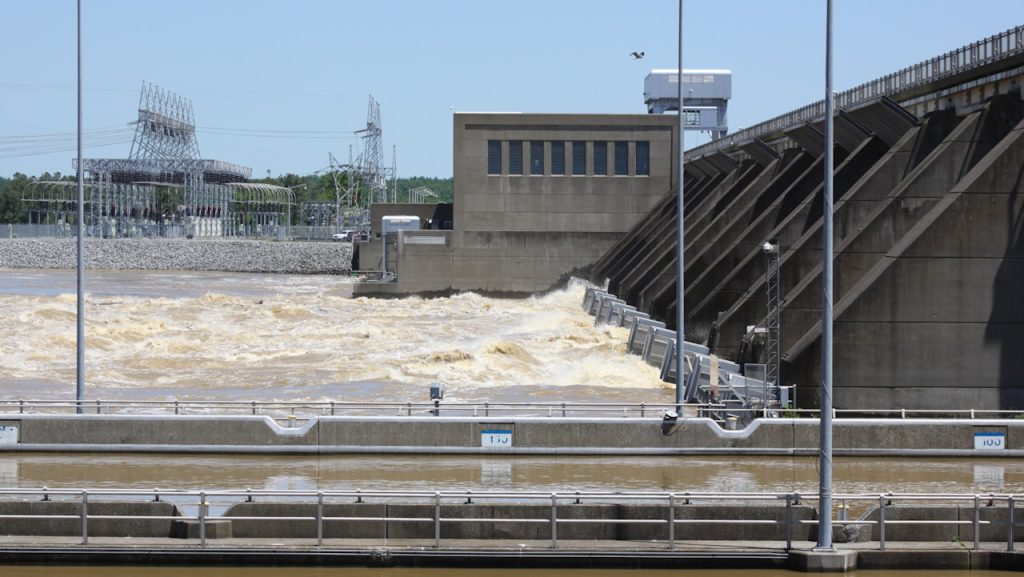Kentucky Lake and Lake Barkley’s fluctuating water levels can have some impact for real estate along the shoreline. Understanding the lake’s annual rise and fall cycle is essential for potential buyers and homeowners.
The Guide Curve
The Tennessee Valley Authority (TVA) manages seasonal target levels on a guide curve:
- Winter Pool at 354 feet above sea level provides flood storage capacity from December 1 to April 1. This lowered level prepares for incoming spring rains.
- Spring Fill occurs during April as levels gradually rise back up. Typically, Summer Pool is reached May 1.
- Summer Pool is at 359 feet although sometimes the water levels are managed between 359’ and 360’. The Summer Pool level is great for recreational use from May 1 to July 5. This is the highest level of the year.
- Fall Drawdown begins after July 4th as levels start decreasing to prepare for winter. Winter Pool is reached December 1, so boaters can continue to enjoy good lake levels into early fall.
Levels primarily follow the guide curve but can deviate during periods of heavy rain or drought. Kentucky Lake and Lake Barkley don’t flood in the sense that homes or buildings are submerged, although parking lots, sidewalks and other minor infrastructure could be impacted.
Kentucky Dam and Barkley Dam limit the two lakes’ levels at 375 feet, even during extremely high-water events. The record high level for the lakes is 372.5’ set in 2011.
What Fluctuating Levels Mean for Property Owners
Higher summer elevations submerge shoreline vegetation and allow full lake access from docks. Lower winter pools expose more shoreline around docks. Access may become limited in very shallow bays and coves. Owners will need to pay attention to avoid boats becoming stuck.
For those considering a specific lot or home on Kentucky Lake or Lake Barkley, contact us about the depth of the lake where the dock is located. If there is no dock and you would like one in the future, ask if the property is “dockable” from TVA (Kentucky Lake) or US Army Corps of Engineers (Lake Barkley).
Consider a property’s slope and terrain – steep drop-offs generally stay submerged, while low and flat shorelines can become mudflats during drawdown.
Homes and buildings must be constructed above the 381-foot contour elevation per TVA regulations on Kentucky Lake. Lake Barkley’s shoreline is managed by the US Army Corps of Engineers and they have similar restrictions.
It’s also key to note that lakefront property owners do not own the shoreline itself. The shoreline is public land managed by either TVA (Kentucky Lake) or the Army Corps of Engineers (Lake Barkley).
Facts to Know Before Purchasing Kentucky Lake Real Estate
While living on the shores of Kentucky Lake and Lake Barkley has very little risk, there are some things to consider. Factor in the property’s slope, vegetation, dock placement/water depth, and intended recreational use during seasonal highs and lows.
If the property you are considering has shallow water, think about what to do with your boat during Winter Pool. Having a public launch ramp or a marina nearby is a big plus. There are also several places to over-winter your boat, from storage units to dry stacks to marinas.
The Dunnaway Property Group has over 20 years of marketing Kentucky Lake and Lake Barkley. Contact us if you have any questions regarding the levels of Kentucky Lake and Lake Barkley.
You can also track real-time lake conditions at Explore Kentucky Lake and TVA’s website.




Pingback: Excellent Fishing Awaits You at Kentucky Lake & Lake Barkley - Kentucky Lake Real Estate
Pingback: Attractions & Activities to Enjoy While Living at Kentucky Lake - Kentucky Lake Real Estate